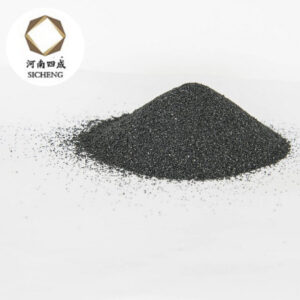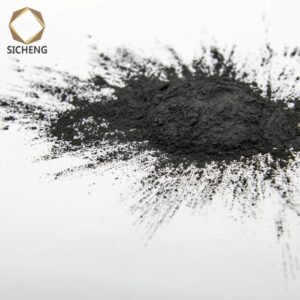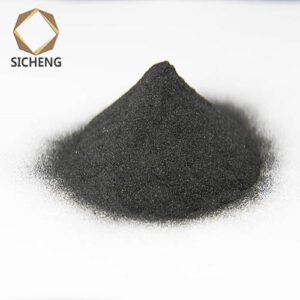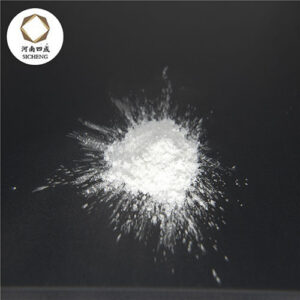Surface cleaning quality after sandblasting:
(1) Sa1 – manual brushing cleaning level (or cleaning level) Sa1 level treatment technical standards: the surface of the workpiece should not be visible oil, grease, residual oxide scale, rust spots and residual paint and other dirt; After treatment, a large number of metal spots appear on the surface that are uniformly distributed.
(2) Sa2 – technical standards for commodity cleaning grade (or industrial grade) Sa2 level treatment: the surface of the workpiece should not be visible greasy, dirt, oxide scale, rust skin, paint, oxide, corrosion and other foreign substances (except defects), but the defect point is limited to no more than 33% of the surface per square meter, which can include: slight shadows; A small amount of slight discoloration caused by defects and rust; Oxide scale and paint defects. If there is a dent on the original surface of the workpiece, slight rust and paint will remain at the bottom of the dent.
(3), Sa2.5 – near-white cleaning level (or white level) Sa2.5 level is commonly used in industry and can be used as a level of acceptance technical requirements and standards. Technical standards for Sa2.5 level treatment: the same as the first half of the Sa2 requirements, but the defects are limited to no more than 5% of the surface per square meter, which can include: slight shadows; A small amount of slight discoloration caused by defects and rust; Oxide scale and paint defects.
(4), Sa3 – white cleaning grade (or white grade) Sa3 grade is a higher treatment grade in industry, the surface of the cleaned steel is completely consistent silver-gray, with a certain surface roughness to improve the adhesion ability of the layer. Technical standards for Sa3 level treatment: the same as Sa2.5 level, but 5% of shadows, defects, rust, etc. must not exist. The surface of the workpiece treated by shot peening is metallic, but because the surface is spherical, the light part is refracted and the workpiece has a matte effect (generally about 30 minutes). After shot peening, the surface of the workpiece is traced without destruction, and the surface parts are increased.Surface roughness
(1) The role of surface roughness: increase the actual bonding area between the coating and the workpiece surface, improve the coating adhesion, the coating will produce a lot of internal stress during the curing process, the presence of roughness can eliminate the stress concentration in the coating, prevent the coating from cracking, the presence of surface roughness can support the weight of a part of the coating, which is conducive to eliminating the phenomenon of sagging, and the role is particularly obvious for the surface of vertical coating.
(2) Factors affecting roughness: particle size, hardness, particle shape, hardness of the material of the work itself, pressure and stability of compressed air, distance and angle between the nozzle and the surface of the workpiece
(3) Several problems related to surface roughness: cleaning time and surface roughness size have almost nothing to do with the angle between the nozzle and the surface will affect the surface roughness, but the change between 45o~90o is not obvious, cleaning the surface with large particles of abrasive can improve work efficiency, but will make the surface roughness high. Studies have shown that abrasives with a particle size greater than 1.2mm cause high roughness values. Recleaning a rough surface with a small-grained abrasive can reduce the surface roughness to the specified value.
(1) Sa1 – manual brushing cleaning level (or cleaning level) Sa1 level treatment technical standards: the surface of the workpiece should not be visible oil, grease, residual oxide scale, rust spots and residual paint and other dirt; After treatment, a large number of metal spots appear on the surface that are uniformly distributed.
(2) Sa2 – technical standards for commodity cleaning grade (or industrial grade) Sa2 level treatment: the surface of the workpiece should not be visible greasy, dirt, oxide scale, rust skin, paint, oxide, corrosion and other foreign substances (except defects), but the defect point is limited to no more than 33% of the surface per square meter, which can include: slight shadows; A small amount of slight discoloration caused by defects and rust; Oxide scale and paint defects. If there is a dent on the original surface of the workpiece, slight rust and paint will remain at the bottom of the dent.
(3), Sa2.5 – near-white cleaning level (or white level) Sa2.5 level is commonly used in industry and can be used as a level of acceptance technical requirements and standards. Technical standards for Sa2.5 level treatment: the same as the first half of the Sa2 requirements, but the defects are limited to no more than 5% of the surface per square meter, which can include: slight shadows; A small amount of slight discoloration caused by defects and rust; Oxide scale and paint defects.
(4), Sa3 – white cleaning grade (or white grade) Sa3 grade is a higher treatment grade in industry, the surface of the cleaned steel is completely consistent silver-gray, with a certain surface roughness to improve the adhesion ability of the layer. Technical standards for Sa3 level treatment: the same as Sa2.5 level, but 5% of shadows, defects, rust, etc. must not exist. The surface of the workpiece treated by shot peening is metallic, but because the surface is spherical, the light part is refracted and the workpiece has a matte effect (generally about 30 minutes). After shot peening, the surface of the workpiece is traced without destruction, and the surface parts are increased.Surface roughness
(1) The role of surface roughness: increase the actual bonding area between the coating and the workpiece surface, improve the coating adhesion, the coating will produce a lot of internal stress during the curing process, the presence of roughness can eliminate the stress concentration in the coating, prevent the coating from cracking, the presence of surface roughness can support the weight of a part of the coating, which is conducive to eliminating the phenomenon of sagging, and the role is particularly obvious for the surface of vertical coating.
(2) Factors affecting roughness: particle size, hardness, particle shape, hardness of the material of the work itself, pressure and stability of compressed air, distance and angle between the nozzle and the surface of the workpiece
(3) Several problems related to surface roughness: cleaning time and surface roughness size have almost nothing to do with the angle between the nozzle and the surface will affect the surface roughness, but the change between 45o~90o is not obvious, cleaning the surface with large particles of abrasive can improve work efficiency, but will make the surface roughness high. Studies have shown that abrasives with a particle size greater than 1.2mm cause high roughness values. Recleaning a rough surface with a small-grained abrasive can reduce the surface roughness to the specified value.





